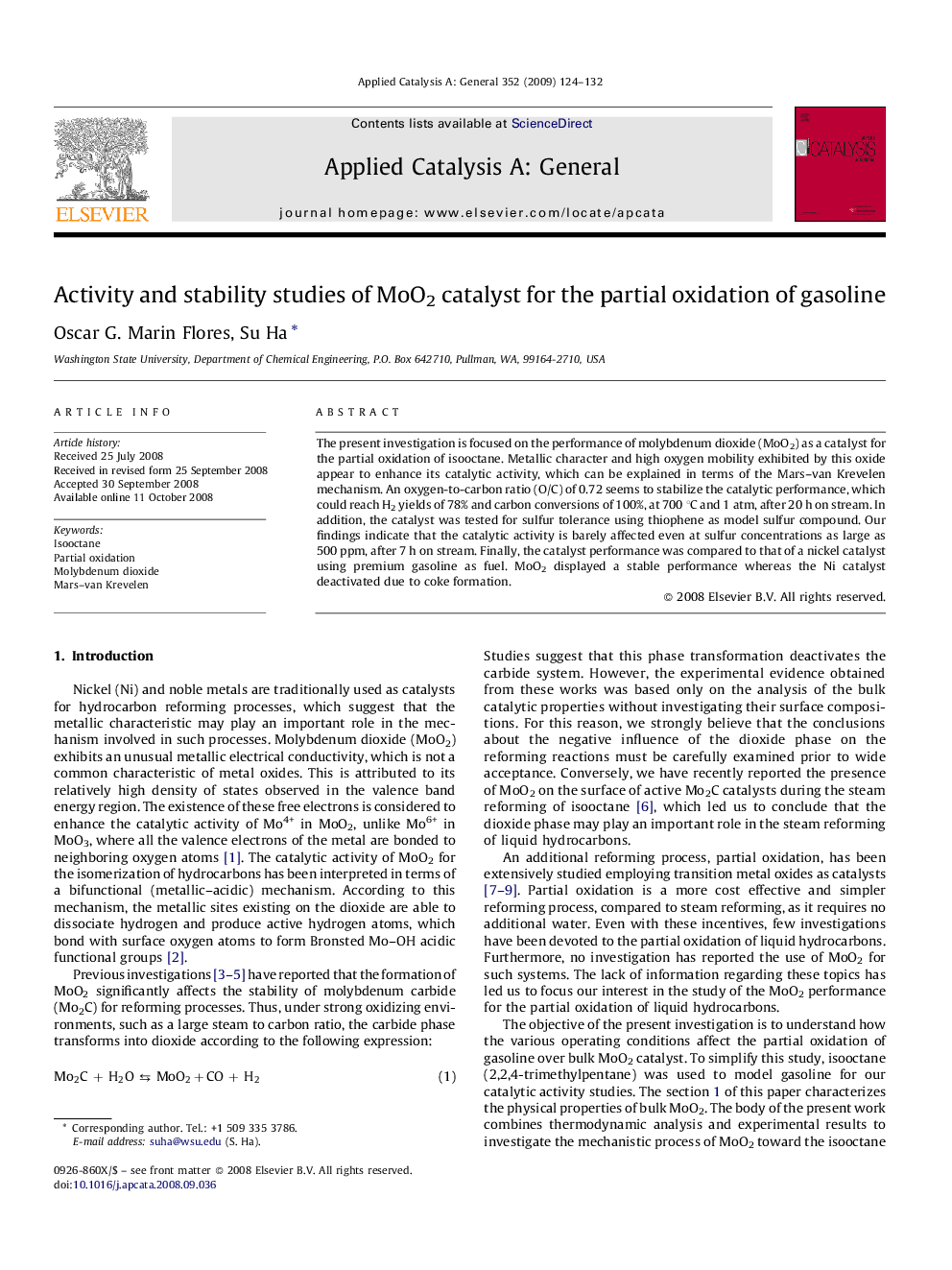| Article ID | Journal | Published Year | Pages | File Type |
|---|---|---|---|---|
| 43161 | Applied Catalysis A: General | 2009 | 9 Pages |
The present investigation is focused on the performance of molybdenum dioxide (MoO2) as a catalyst for the partial oxidation of isooctane. Metallic character and high oxygen mobility exhibited by this oxide appear to enhance its catalytic activity, which can be explained in terms of the Mars–van Krevelen mechanism. An oxygen-to-carbon ratio (O/C) of 0.72 seems to stabilize the catalytic performance, which could reach H2 yields of 78% and carbon conversions of 100%, at 700 °C and 1 atm, after 20 h on stream. In addition, the catalyst was tested for sulfur tolerance using thiophene as model sulfur compound. Our findings indicate that the catalytic activity is barely affected even at sulfur concentrations as large as 500 ppm, after 7 h on stream. Finally, the catalyst performance was compared to that of a nickel catalyst using premium gasoline as fuel. MoO2 displayed a stable performance whereas the Ni catalyst deactivated due to coke formation.
Graphical abstractThis figure describes a comparison between the performances of MoO2 and a nickel catalyst for the partial oxidation of premium gasoline (O/C = 0.72, WHSV = 0.6 h−1 and T = 700 °C). As observed, after 7 h on stream, the catalytic performance exhibited by MoO2 was fairly stable, obtaining a H2 yield of 94% and a conversion of 100%.Figure optionsDownload full-size imageDownload as PowerPoint slide
